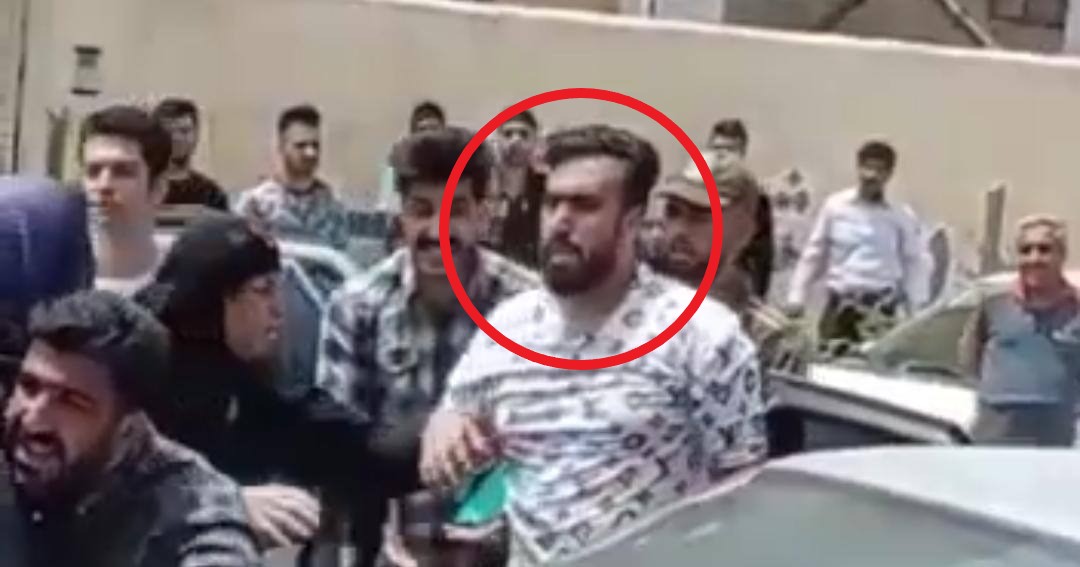SJ identifies Ehsan Gholampour:
A member of IRGC involved in attempted arbitrary arrest of teacher union activist
A Spreading Justice investigation has identified Ehsan Gholampour as a member of the Kohgiluyeh and Boyer-Ahmad Islamic Revolutionary Guards (IRGC) unit involved in the April 25 failed arrest of teachers union activists, Ali Hassan Bahamin.
On April 25, 2022, a number of security agents affiliated with the IRGC of Kohgiluye and Boyer-Ahmad province attempted to forcibly arrest Ali-Hassan Bahamin upon departure from his place of work. Efforts to detain Bahamin without warrant were met with heavy resistance due to the actions of Bahamin and others present at the scene. Video of the situation began circulating online shortly following the IRGC’s attempted arrest. This video evidence allowed the Spreading Justice team to analyze those present at the scene and work in close coordination with volunteers to confirm Ehsan Gholampour’s presence.
A number of trusted sources assisted the Spreading Justice team in the primary identification and fact-checking process of those present at the scene.
The video evidence demonstrates the severity of the violence used by the agents, including Ehsan Gholampour. Notably, as a result of the violence, Bahamin’s hand was severely damaged. The attempt to arbitrarily detain Bahamin is a blatant violation of the right to liberty and security of person as guaranteed by Article 9 of the ICCPR to which Iran is a State party. Attempts to suppress the freedom of association and assembly through arbitrary detention must be widely condemned.
According to the statements collected by the Spreading Justice, Ehsan Gholampour was also an agent directly involved in the suppression of protesters in November 2019 in Kohgiluyeh and Boyer-Ahmad provinces.
Spreading Justice spoke to individual victims of human rights abuses at the hands of the Revolutionary Guards in the region. One of the sources told Spreading Justice: “Ehsan Gholampour, along with 50 plainclothes forces, […] played a large role in suppressing the population in the town of Likak in the Bahmai district of Kohgiluyeh and Boyer-Ahmad Provinces”.
According to the Human Rights Activists News Agency (HRANA), the November protests took place in 719 locations across the country, including Kohgiluyeh and Boyer-Ahmad Provinces. Seyyed Hossein Naghavi Hosseini, the then spokesman of the National Security and Foreign Policy Commission of the parliament, announced that the number of detainees for the November 2019 protests was about 7,000. According to reports by numerous Human Rights organizations, hundreds of people also died in the bloody protests.
According to sources, Ehsan Gholampour is also a manager of the “Sobh Zagros” website known to be affiliated with the Kohgiluyeh and Boyer-Ahmad Corps. He is also part of the intelligence unit of the Fath Corps in this province.
Spreading Justice, alongside the release of this statement, has added Ehsan Gholampour’s identity to the online database of human rights violators. Gholampour now sits among more than 500 others independently verified by the Spreading Justice team. SJ asks citizens, private sources, and others to visit the database for the images and videos of this incident in order to identify the others involved in this violation and others.
* The identity of the informants involved in the identification of this human right violator has been kept confidential with respect for their security.



